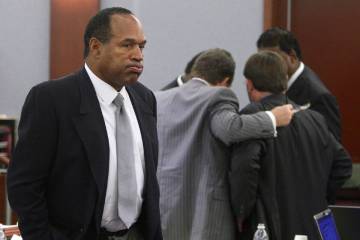Making it work: Four generations in the workplace
If you ask a random sampling of people how they remember a historical event such as the fall of the Berlin Wall, their responses will be based on their age when it occurred as well as their cultural perspective. The wall fell in November 1989. Memories may include diverse responses such as “I remember my parents watching TV all night,” to “I have a piece of the wall that was given to me by my sister, who was there,” to “It felt like what I fought for had finally taken place.” (These are all actual memories of the event.)
This diversity in memory reflects the shift in the workforce that has taken place in recent years. The oldest generation still living, called “ traditionalists” or “veterans,” those born before 1946, are still working in some cases. Baby boomers, those born from 1946 through 1965, still work, frequently because they are supporting younger generations. Generation X (GenXers), those born from 1966 through about 1980 (sources differ as to the defining years), are in the thick of their careers. Generation Y or the millennials, those born from about 1981 through about 2000, have entered the workforce if they could find a job or are still attending school. In many workplace environments, four generations work side by side.
Obviously, just because you were born in an era does not mean you will exhibit the traits of that generation. The demographics are done to determine statistical trends only, not to predict your individual behavior. If you were born from 1981 to 2000, or if you just want to see how closely your attitudes match those of the millennials, you can take the 14-question quiz at www.pewresearch.org/quiz/how-millennial-are-you/.
Managing these differing attitudes and work styles has become a hot topic. Members of each generation can be expected to have their own ways of viewing the world and their place within it, their attitudes toward work, how they address communication and technology and what they expect to put into and get out of education. Wise managers will become fluent in each generation’s needs and expect to plan ways to help meet them within the workplace.
Melissa Proffitt Reese and Tiffany A. Sharpley, partner and associate at Ice Miller’s Employee Benefits Practice Group, provided some insight into the four generations in their article titled, “Four Generations — One Workplace — Can We All Work Together?” Insight was also provided by an article “Changing Workplaces, Changing Lives,” on the website www.catalyst.org .
Traditionalists are conservative, fiscally prudent and loyal to employers. This generation is sometimes called “the great generation,” perhaps because they learned the hard way how to sacrifice in behalf of others and go without due to necessity. They have experience and expertise, whether through living or through education, and they want to be respected.
Baby boomers are optimistic and ambitious, and they may be the best educated of the generations. Like traditionalists, they have a strong work ethic and are loyal to employers. They are good multitaskers, and the largest boom in social media use is among this group, according to ComScore .
GenXers are independent, having the highest number of divorced parents in this generation. They grew up as “latch-key kids.” They came home from school and took care of their chores and homework before their parents arrived home from work. They frequently live in self-sufficient, double-income families, perhaps for this reason. They change jobs more frequently and have multiple careers, perhaps because of a changing market. They are adept at social networking and expect to communicate using social media.
Millennials grew up in similar environments to GenXers (single parent or double-income families), but with different parenting styles: timeouts instead of spankings, overprotective parents, politically correct language. They are highly conscious of the environment and accept all differences in race, gender, ethnicity, sexual orientation, etc. They may not be self-starters, perhaps because of their parents’ overprotective parenting style. Like GenXers, they are adept at social networking and expect to communicate using social media.
According to an article in the Harvard Business Review called “Mentoring Millennials,” by 2014 the millennials will account for nearly half the employees in the world, already accounting for a majority in emerging markets, where the age of the average worker is lower than that of nonemerging markets. This shift has caused managers to take note, as millennials are generally regarded as “attention sponges.” In the Harvard Business Review survey, millennials “did want a constant stream of feedback and were in a hurry for success, but their expectations were not as outsized as many assume.”
This is good news. Even better news is that, according to the survey, “millennials place a strong emphasis on finding work that’s personally fulfilling. They want work to afford them the opportunity to make new friends, learn new skills and connect to a larger purpose. That sense of purpose is a key factor in their job satisfaction.”
Millennials want communication, flexibility and career development from their bosses, and they need to know they work for a company with strong values with which they can blend their lives. They want training in technical skills, leadership skills and innovation strategies. Traditionalists, boomers and GenXers are prime candidates to deliver this training and mentoring.
Rawn Shah, in his article on Forbes online titled “Working With Five Generations in the Workplace,” stated, “The ability of individuals and teams to connect and communicate across the organization, reshape teams, workgroups, organizational units, processes and models, and learn and respond to changing needs … are the same fundamental capabilities that start with and can grow out of the use of online collaborative tools. This implies that to keep up with the demands of business, we (all generations) would need to become used to working in this way.”
This statement implies that millennials and GenXers have something to offer to boomers and traditionalists as well: They can coach in the appropriate use of social media and use of other online tools to boost team building and new learning models.
When employees communicate, it is essential to avoid letting things devolve into comments that reflect giving up on the others’ points of view, such as, “They just don’t get it,” or “They had it so easy.” Managers need to continually provide team-building and idea-sharing opportunities so employees can find elements they have in common besides their obvious generational differences.
Shah noted an emerging concept that has come out of collaboration : social learning. This is about employees learning from each other. He stated, “If the learning environment is well structured, employees learn about practical subject matter as it is practiced in the workplace, in the most current method it can be taught, with the current knowledge, interpretation and help of the practitioners.” Social learning is not about finding a way to deliver all the well-prepared materials you have through collaboration, but a change in how people learn entirely.
It may help to consider the Socratic method: a dialectical method, in which the defense of one point of view is pitted against the defense of another. The amicable, although sometimes energetic, debate is considered part of the teaching process.
The idea is that working with four generations in the workplace can go beyond just teaming older generations with younger generations and hoping that mentoring happens in both directions. Rather, working with four generations requires the manager and all of the employees to be prepared to allow insight about any aspect of work or the process of work to flow freely across multiple generations. Doing this requires getting people on the same plane of communication expertise, rewarding employees who develop peer relations, and moving your learning environment towards a social learning method. Shah sees these factors as crucial in developing a competitive, flexible business.
Managers may want to provide information about the general characteristics of the generations, as this has proven to help people understand why they see things like education differently than their children or parents (or co-workers) do. From there, employees may be more ready to look at the workplace characteristics of the generations. Learning these characteristics can help employees understand the perceptions and assumptions others they work with have as they communicate. This heightened understanding can then help them communicate more clearly.
For example, a boomer may say to a second boomer, “We need this project completed right away.” The boomer knows the second boomer receives this communication as a direction, and the second boomer will get right on it. If this direction is given to a GenXer or a millennial, it may be received as an observation, and the receiver may wait for further communication as to how the original boomer wants to get the project done. The original boomer needs to compensate for this difference in perception and communicate what is wanted directly.
If a millennial is an employee and has a boomer or traditionalist for a boss, the millennial may want to compensate for his or her own differences in communication and try to understand that the boss communicates in directions that are supposed to be acted on right now. The millennial may have to be clear if he or she has any questions and self-start otherwise. The most important thing is once differences in communication style are made clear, adjustments can be made without difficulty.
In an article titled “Managing 4 Generations of Workers Requires Appreciation of Differences,” published in the online Journal of Polish Americans , writer George S. May suggests some tips for managers:
n First, understand that there might be misinterpretations in any communication.
n Second, if you are the boss or a manager, be specific about giving instructions. Don’t assume the other person understands what you mean.
n Third, if you are the receiver of the order, ask for specifics if they aren’t given to you. For example, “When specifically does the report need to be done?”
A good rule of thumb is the old adage: There are no dumb questions. All parties need to feel free to ask and answer questions as needed. In addition to language and cultural obstacles that may occur in our diverse society, the generations may have different manners and expectations of behavior. Clear, specific communication, even repeated, stated in a way to help everyone hear correctly, should be encouraged rather than regarded as a chore.
Work itself is regarded differently by the different generations. To traditionalists, it is a duty, a requirement and a loyalty to a company. To boomers, it is an opportunity to succeed, for personal fulfillment, and an adventure. GenXers want to complete the task and get out to what they really want: their lives. They are interested in being self-reliant. Millennials want to know what’s next and see work as a means to an end, while that end may be a cause they believe in. They are accustomed to immediate feedback through social media and want the same kind of feedback in their work.
All of these perspectives are valid and can work together. A knowledgeable manager and willing employees can contribute to successful communication across all levels.














